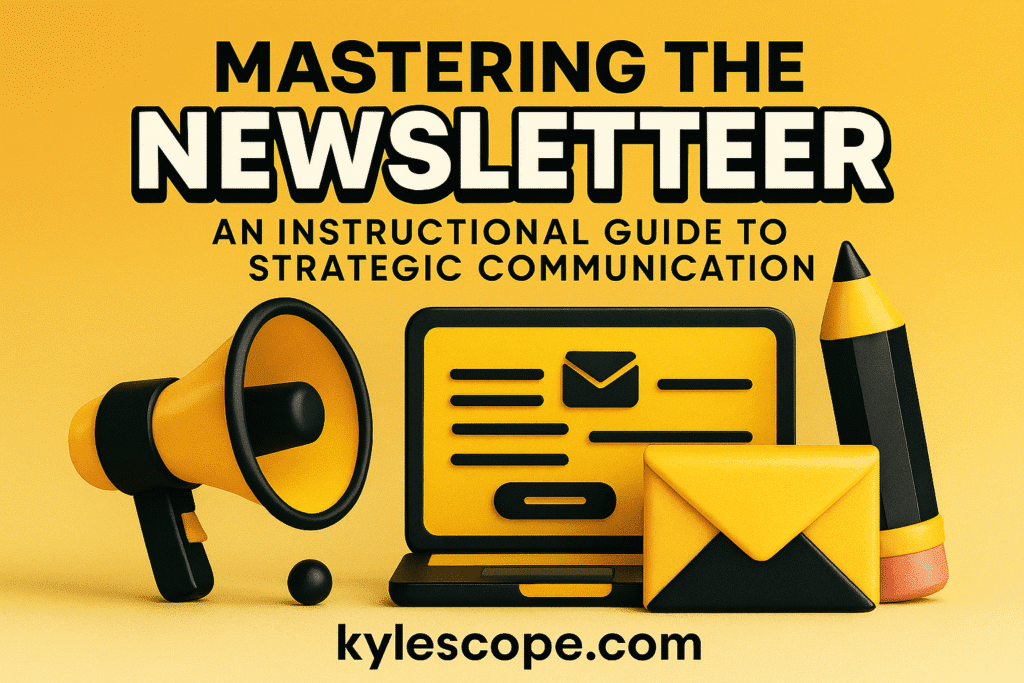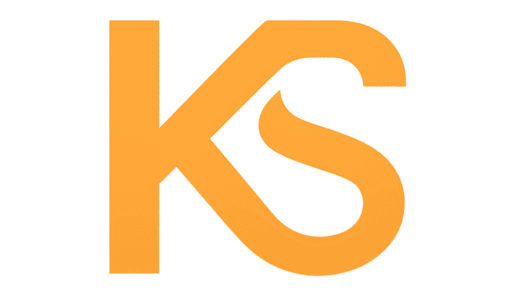
Introduction
A newsletter is more than a periodic email. It is a strategic communication tool that builds relationships, drives engagement, and reinforces brand authority. Whether you are an educator, an agency, or an e-commerce brand, newsletters help you stay top of mind with your audience. They allow you to share updates, tell stories, and create meaningful connections that extend beyond transactional interactions.
Effective communication is not about perfection, but about authenticity, clarity, and consistency. Drawing from those insights, this article provides a structured, academic, and instructional guide to understanding newsletters as a communication medium. Each section builds on the previous one, offering a roadmap for anyone who wants to master the craft of creating impactful newsletters.
What Is a Newsletter?
Definition, Formats, and Business Use Cases
A newsletter is a recurring communication sent to a defined audience to inform, engage, or inspire action. Unlike one-off marketing emails, newsletters build continuity and establish a rhythm of communication. They can take the form of plain text emails, HTML-rich designs, or even hybrid formats that combine storytelling with visual elements. The most effective newsletters are not always the most polished but the most personal and authentic.
Businesses use newsletters in multiple ways. Nonprofits use them to update supporters, educators use them to share resources, and e-commerce brands use them to highlight promotions or new arrivals. Each case demonstrates that newsletters are not limited to one industry but serve as versatile tools for communication. To gain a deeper understanding of this concept, you can review “Newsletter Writing,” which provides structured insights into how newsletters function as strategic communication assets.
Why Authenticity Defines the Format
The most memorable newsletters are those that reflect the sender’s personality. A black-and-white, cut-and-paste newsletter from a relative in Mongolia resonated more than glossy, professional ones because it was authentic. This illustrates that format matters less than the ability to communicate honestly. Whether you choose a simple plain-text email or a design-rich HTML template, the key lies in aligning the format with your voice and your audience’s expectations.
Why Newsletters Matter in Digital Strategy
Engagement, Retention, Conversion, and Storytelling
Newsletters matter because they create consistent engagement. They enable you to share stories, updates, and insights that keep your audience engaged and connected. Brent Manke’s work stresses that people care more about how you are doing than about statistics. This principle applies broadly: audiences want to feel connected to the human side of your work. By sharing stories, you create emotional resonance that drives retention.
Conversion also plays a role. While newsletters are not always direct sales tools, they guide readers toward actions such as attending events, supporting causes, or purchasing products. Storytelling enhances this process by making the communication relatable. When you share a personal story or a mission update, you invite readers into your world, which increases the likelihood of long-term support and engagement. For professional support in this area, you can explore Newsletter Writing Services, which outlines how structured services can help organizations maximize engagement and conversions.
Building Trust Through Consistency
Consistency builds trust. Sending newsletters regularly shows that you value your audience’s attention. It is crucial to set deadlines and maintain a rhythm. Shorter, more frequent updates often work better than longer, less frequent ones. This rhythm ensures that your audience feels included in your journey rather than left in the dark.
Types of Newsletters
Promotional, Educational, Editorial, Onboarding, and Re-engagement
Different types of newsletters serve various purposes. Promotional newsletters highlight offers, discounts, or events. Educational newsletters provide resources, tutorials, or insights that help readers learn. Editorial newsletters share opinions, curated content, or thought leadership. Onboarding newsletters guide new subscribers through the first steps of engagement. Re-engagement newsletters attempt to reconnect with inactive subscribers.
Each type requires a different tone and structure. Promotional newsletters may use urgency, while educational ones emphasize clarity. Editorial newsletters often adopt a conversational tone, while onboarding ones focus on simplicity. Re-engagement newsletters must acknowledge the gap and offer a reason to return. By understanding these categories, you can design newsletters that align with your goals and meet your audience’s expectations.
Newsletter vs. Blog vs. Social Media
Channel Roles, Audience Expectations, and Content Cadence
Newsletters, blogs, and social media each serve distinct roles. A blog provides long-form, evergreen content that builds authority. Social media offers real-time interaction and a broad reach. A newsletter, however, creates a direct line of communication with your audience. Unlike social media, where algorithms control visibility, newsletters are delivered directly to inboxes.
Audience expectations also differ. Blog readers expect depth, social media users expect brevity, and newsletter subscribers expect a balance of personal connection and valuable information. Content cadence varies as well. Blogs may be updated weekly, social media posts may be shared daily, and newsletters may be sent monthly or biweekly. Understanding these differences helps you integrate newsletters into a broader communication strategy.
How to Create a Newsletter That Works
Strategy, Segmentation, Design, and Copy
Creating an effective newsletter requires strategy. You must define your goals, whether they involve engagement, fundraising, or sales. Segmentation ensures that your message reaches the right audience. For example, financial supporters may receive different updates than general subscribers. Design supports readability, but content always comes first.
Copy is the backbone of a newsletter. It must be clear, concise, and authentic. Stories, updates, and calls to action should flow naturally. To explore professional approaches to crafting persuasive copy, you can review Copywriting, which provides insights into how strong writing transforms communication.
Balancing Content and Design
Simplicity in design is fundamental. Overly complex layouts can distract from the message. A well-designed newsletter amplifies the content rather than overshadowing it. Font size, color contrast, and mobile responsiveness are all critical considerations. However, the ultimate goal is to ensure that the message remains accessible and engaging.
Newsletter Copywriting Tips
Subject Lines, Preview Text, Body Structure, and CTAs
Subject lines determine whether your newsletter gets opened. They must be clear, intriguing, and relevant. Preview text complements the subject line by offering a glimpse of the content. The body structure should follow a logical flow: introduction, story, supporting details, and call to action.
Calls to action (CTAs) must be specific and actionable. Instead of vague prompts like “Click here,” use direct language such as “Download your guide” or “Support this project.” Honesty and clarity are essential and apply directly to CTAs. For expert support in refining your copy, consider Hire a Copywriter, which connects you with professionals who specialize in persuasive communication.
The Role of Honesty in Copy
Honesty builds credibility. We warn you against making vague or misleading statements, especially those related to finances. Clear communication ensures that readers trust your message. When requesting support, be straightforward. When you share updates, be transparent. This honesty fosters stronger relationships and enhances long-term engagement.
Newsletter Tools and Automation
Platforms, Scheduling, Personalization, and Analytics
Tools simplify the process of creating and sending newsletters. For example, Mailchimp is a platform for creating HTML newsletters that are accessible. Automation allows you to schedule campaigns, segment audiences, and personalize content. Personalization increases engagement by addressing readers by name or tailoring content to their interests.
Analytics provide insights into performance. Open rates, click-through rates, and engagement metrics help you refine your strategy. By analyzing data, you can identify what resonates with your audience and adjust accordingly. External resources such as HubSpot’s guide to email marketing provide additional insights into tools and best practices.
Balancing Technology with Authenticity
While tools enhance efficiency, authenticity remains essential. Technology must serve the message, not the other way around. A plain-text email that communicates honestly can be more effective than a design-heavy HTML template. The key is to use tools strategically while maintaining a personal voice.
Conclusion: Elevating Communication Through Newsletter Writing Services
Newsletters are not just periodic emails. They are strategic communication tools that build relationships, drive engagement, and reinforce brand authority. From defining formats to crafting copy, from segmenting audiences to analyzing performance, every step contributes to effective communication. Authenticity, clarity, and consistency are the essential foundations of a successful newsletter.
When you commit to creating newsletters with intention, you do more than share updates. You build trust, demonstrate transparency, and invite your audience into an ongoing conversation. Readers value honesty, and they respond to stories that feel personal and real. By focusing on clarity and consistency, you ensure that your communication resonates across diverse audiences.
Professional support can help you refine this process. Expert writers and strategists understand how to balance storytelling with structure, design for readability, and integrate analytics for continuous improvement. If you want to elevate your communication strategy and achieve measurable results, consider exploring professional newsletter writing services. These services ensure that your newsletters remain authentic, engaging, and aligned with your goals.
For additional insights into effective communication, you can also explore kylescope.com and its writing resources. These resources provide frameworks, examples, and strategies that help you create newsletters that not only inform but also inspire action.
Finally, remember that technology and design are only as effective as the message they carry. A straightforward, honest email can sometimes outperform a glossy HTML template if it conveys sincerity. The key is to remain consistent, authentic, and audience‑focused. By doing so, you transform newsletters from routine updates into powerful tools of connection.
Call to Action:
If you are ready to strengthen your communication strategy and build lasting relationships with your audience, now is the time to act. Explore expert newsletter writing services today and discover how professional guidance can help you craft messages that engage, convert, and inspire.
